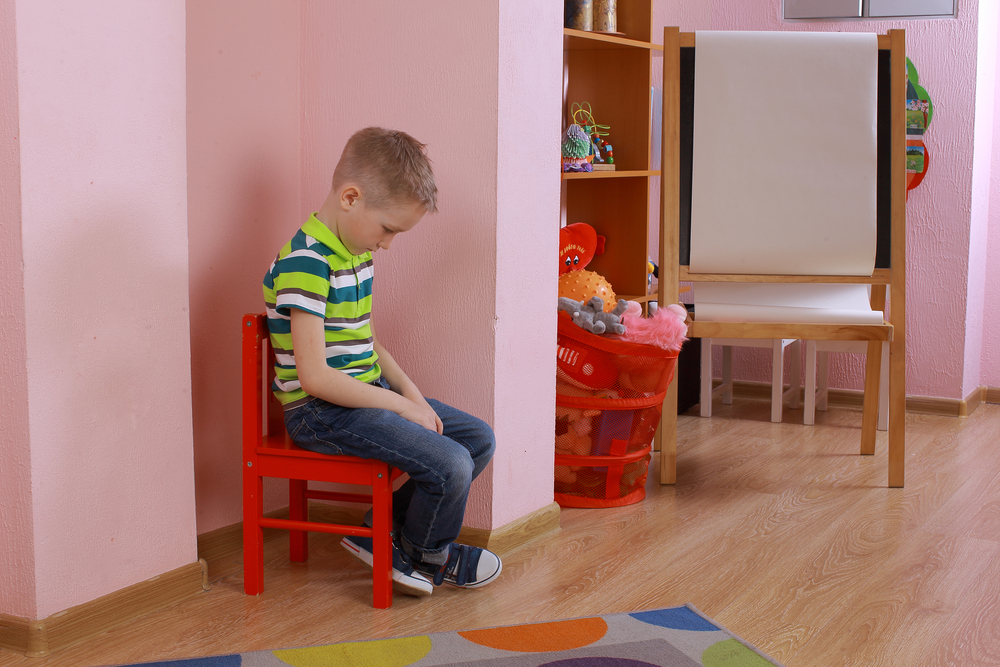Are you trying to figure out a way to keep your kiddo in line?
From children to teenagers, our kids need continuous guidance, and part of that means teaching them acceptable behaviors and unacceptable behaviors.
Unfortunately, simply explaining these concepts is often not enough, so discipline may be necessary.
But there’s no point in wasting your time disciplining your child if it’s not going to work!
Here are some discipline methods that don’t work and what you can do instead:
Spanking
This one goes without saying, but there are still parents out there that adhere to corporal punishment.
In recent decades, experts have come to the realization that spanking is unethical, abusive, and detrimental to children. In fact, studies have shown that spanking makes kids less likely to behave.
Time Outs

Yes, that’s right, Nanny 911 is officially outdated!
Sending your kid to the naughty corner for a time-out is a form of punishment that uses inactivity.
It doesn’t teach kids anything because the act of standing in a corner has no relation to the offending behavior. Plus, kids are good at entertaining themselves, so they’re probably not as bored as you may think!
Taking Away Screen Time
You would think that using something your child loves as a consequence would be powerful when it comes to discipline, but being able to take away screen time means you have an even bigger problem.
If taking away screen time works for your child, then they are probably getting too much screen time!
And too much screen time may actually be the root cause of their misbehavior.
So, instead of taking away the screens as a consequence, try reducing your child’s screen time and encouraging them to engage in other activities.
Grounding
Back in the day, grounding was the perfect way to make a disciplinarian point as children were stuck at home with no access to their friends or the outside world.
Nowadays, kids can connect with others through technology, and many don’t care about leaving the house anyway.
(Which is a problem in and of itself!)
Throwing Out Possessions
This form of punishment is emotionally damaging and can traumatize a child when you throw out their favorite toy or possession.
Discipline is all about teaching, while punishment (like this one) is all about instilling fear which is extremely unhealthy.
And it’s a type of punishment that sticks with them. Yes, a spank will heal, but they will remember that discarded toy forever.
Extra Chores
The point of teaching your kid how to do chores is so that they can take care of domestic responsibilities when they are out on their own.
If you use extra chores as a form of punishment, they will come to resent them and struggle to create healthy routines in their own living spaces.
Readings Books or Doing Extra Homework
Again, we don’t want the consequences of discipline to be activities that kids should be encouraged to do!
You don’t want your child to associate things like reading or learning with punishment. That’s just setting them up for failure!
So How Do I Discipline My Kid?

As we all know, parenting does not come with a manual, and if you have used any of the above disciplinary methods, it’s probably because you’re looking for something that works.
Or maybe it does work, but you didn’t realize how harmful it could be.
Either way, there are ways that you can discipline your kids to teach them acceptable behaviors that are safe and healthy.
Here are some healthy discipline strategies:
- Be a Role Model. Start by modeling the way you want your children to behave. For example, if you want them to stop yelling, you need to stop yelling as well.
- Clear and Consistent Rules. Set limits and have consistent rules for your children to follow, explaining them clearly in age-appropriate terms.
- Explain the Consequences. Firmly and calmly explain the consequences of misbehaving and be prepared to follow through immediately.
- Listen to Your Child. There’s a reason why your kid is misbehaving, so it’s important to listen to what they have to say. There may be a problem they need help solving or an emotion they need help working through.
- Reinforce Good Behavior. Instead of always disciplining your kids when they are “bad,” praise them when they are being good!
- Know When to Ignore. As long as your child is not doing anything dangerous, sometimes it’s effective to ignore unwanted behavior – especially if your child is doing it for attention. When they don’t get the attention they want, they’ll eventually stop.
- Redirect Behaviors. Instead of directly addressing an unwanted behavior, try to guide your child to do something else. For example, if your toddler is coloring on the walls, give them some paper to color on.
When you are beginning a new discipline routine with your child, be prepared for some backlash!
Kids love to push limits (it’s how they learn!), and there may be some major meltdowns as you implement these new strategies.
Consistency is key, even if you feel like it will never work. Keep at it, and eventually, you will notice a positive difference in your child’s behavior.
Discipline & Positive Parenting

Positive parenting seems to be one of those trendy buzzwords, and many people believe that it means parenting without consequences for bad behaviors.
Despite what you may have heard, positive parenting doesn’t mean giving your toddler a hug when they slap you across the face.
Positive parenting is a parenting philosophy that is based on the idea that our relationship with our children is the most important thing and that we can help our children develop self-discipline through supportive methods.
Positive parenting is not permissive parenting, and here are some positive parenting practices you can try when it comes to discipline:
- Set Boundaries. Having boundaries is a great way for everyone to feel respected and creates clear expectations for your child.
- Build Connections. Children are more likely to listen to adults they feel a connection to, which is why you shouldn’t diminish that connection by using punishment techniques. Prioritize one-on-one time with your child to strengthen that connection.
- Be Firm. Make sure you are using a firm, not angry, tone with your child that is loving and calm.
- Don’t Shame Your Child. This probably goes without saying as well, but making your child feel bad about themselves will negatively affect their self-esteem.
- Use Natural Consequences. Natural consequences are great because you really don’t have to do anything! Unless your child is in danger, you simply allow them to face the consequences of their actions without your intervention.
- Use Logical Consequences. If you’re going to use consequences, make sure the consequence relates to the behavior. For example, if your child won’t clean up their toys, you’re going to put away every toy you step on, and they can’t get it back until they listen.
Disciplining Your Child
Disciplining is a way to teach your child about acceptable and positive behaviors, not a way to scare them into not misbehaving.
And effective disciplinary methods need to make sense!
So ditch those old methods of disciplining and try something that will work best for you and your child.

